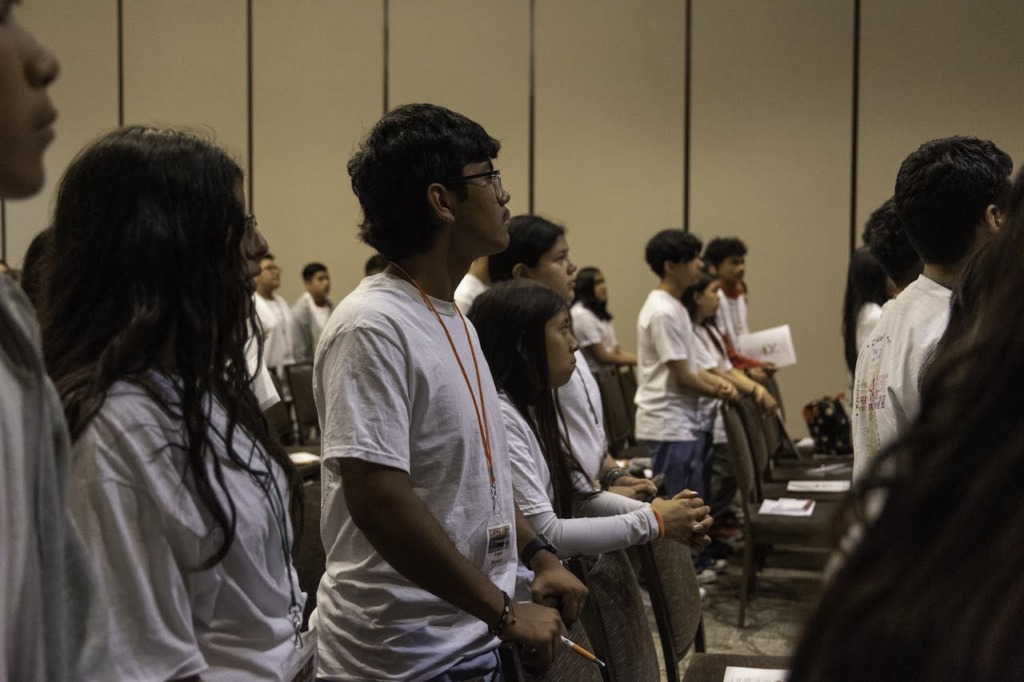Seeking to encounter Christ, 77 Hispanic and Latino Catholic high school teens from across the diocese gathered on April 22 at The Westin, Richmond, to explore and celebrate their community, culture, and faith.
The all-day, bilingual Youth Encuentro (“Encounter”) was titled “The Eucharist in My Life: Walking with Jesus,” for Hispanic and Latino students ages 14 to 18.
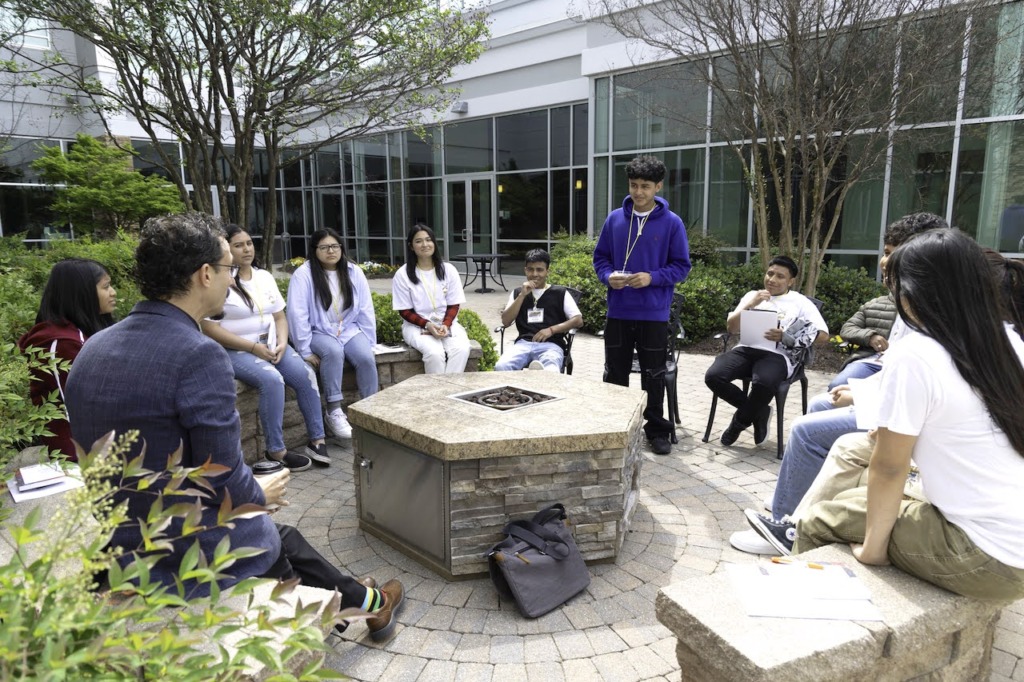
The day included Mass with Bishop Barry C. Knestout, discussion sessions led by three priests, and social activities. The event was organized by the diocese’s Office of Ethnic Ministries.
“This encounter is so important because the Hispanic and Latino Catholic youth are not just future leaders, they are leaders now,” said Daniel Villar, director of the Office of Ethnic Ministries. “We have to give them space for leadership in the Church.”
As the Hispanic and Latino community is one of the largest groups in the diocese, it’s essential that its young members have a voice, he said.
“The Youth Encounter gave them the space to communicate,” Villar explained. “A lot of these young people keep things to themselves because they don’t feel empowered to express their thoughts and feelings. But the speakers gave them a safe space to do that.”
‘It was good to share our stories’
Angel Damian and Israel Munoz, both 16, were part of a group of 12 attendees from St. Gerard, Roanoke.
Both noted that it felt special to have Mass celebrated by Bishop Knestout. “He was right there in front of us,” said Damian. “He was very welcoming and he understands our community.”
He also said it was fun getting to know people, including some from his own parish. “It made my faith better, with all of us telling our stories,” he said.
He observed that some people were shy, especially if they spoke little or no English. He and Munoz met two girls in their group from Guatemala who didn’t speak English. “So we talked to them in Spanish to help them feel welcome,” he recalled.
He added that he was impressed by the honesty of the priests, who said they too have had their share of doubts. “But they’re still here, serving as priests,” Damian said.
Munoz said he was especially moved by the priests’ stories of their missionary work in other areas, especially Guatemala.
Overall, Munoz said, “It was good to share our stories and problems, and to hear the priests talk about their lives. It also helped me reflect more on my life and what I do.”
The three priests met with all the students in groups divided by age throughout the day. Each led a session on a different aspect of walking with Jesus through the Eucharist.
Father Mario Majano, assistant director of vocations and pastor of St. John the Evangelist in Clinton, Maryland, for the Archdiocese of Washington, spoke about the spiritual nature of encountering Christ, especially
as members of Hispanic and Latino cultures.
Father Joe Goldsmith led conversations on mental health, addressing the issues Hispanic and Latino teens are facing today. He is the pastor of the Catholic Cluster: St. John, Dinwiddie; Sacred Heart, Prince George; and St. James, Hopewell.
Father Armando Herrera discussed vocations and gave his own testimony about being called to the priesthood. Ordained in December, Father Herrera is spending three years as parochial vicar at Blessed Sacrament, Harrisonburg, after which he will join the United States Army as a chaplain.
‘Be open to possibility’
Villar emphasized that it was especially meaningful to have Bishop Knestout with them to celebrate Mass. “Youth in general, and especially youth from different cultural backgrounds, are very close to the bishop’s heart,” he explained.
“The bishop’s presence helped them understand their importance and helped them see the value of what they think and say,” added Villar.
Deacon Ramon Rivera from St. John, Highland Springs, and Deacon Ed Owen from St. Benedict, Richmond, joined the priests and bishop for Mass.
After Mass, Bishop Knestout offered a reflection on the importance of encountering each other. “He told them to be open to possibility: of meeting a new friend, of hearing what God is trying to tell them,” Villar said.
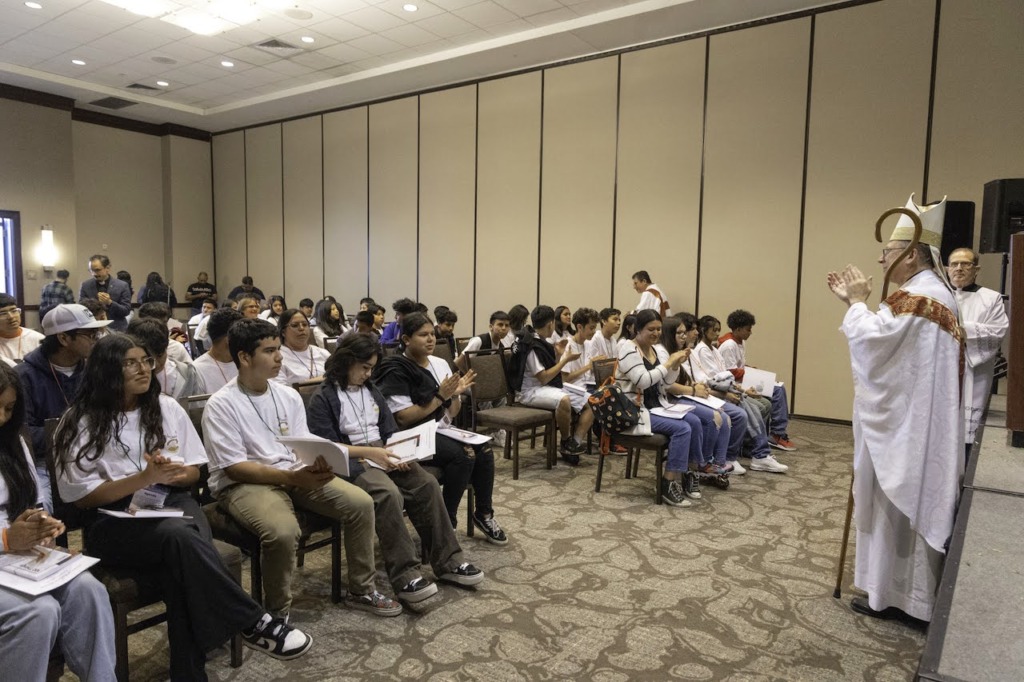
“Today’s society is so divisive, but the students were made to feel comfortable,” he said. “The bishop urged them to be open, and they listened.”
Later he noticed many of them walking back from lunch with someone they had not walked in with.
“It was profound to me, and it’s what our faith is really about: relating to each other,” he noted. “They wanted to reach out and be reached out to. And not once did I see any of them using their phones.”
The last youth encounter was in 2018; Villar hopes it will be an annual event.
He expressed gratitude for all the students, chaperones, bilingual interpreters, clergy, and others who made the event such a success – and especially “to Bishop Knestout for his presence and encouraging message and prayers for the youth.”
Hearing God’s call
“They were very receptive to what I said about encountering Jesus,” Father Herrera recalled about his discussion on vocations.
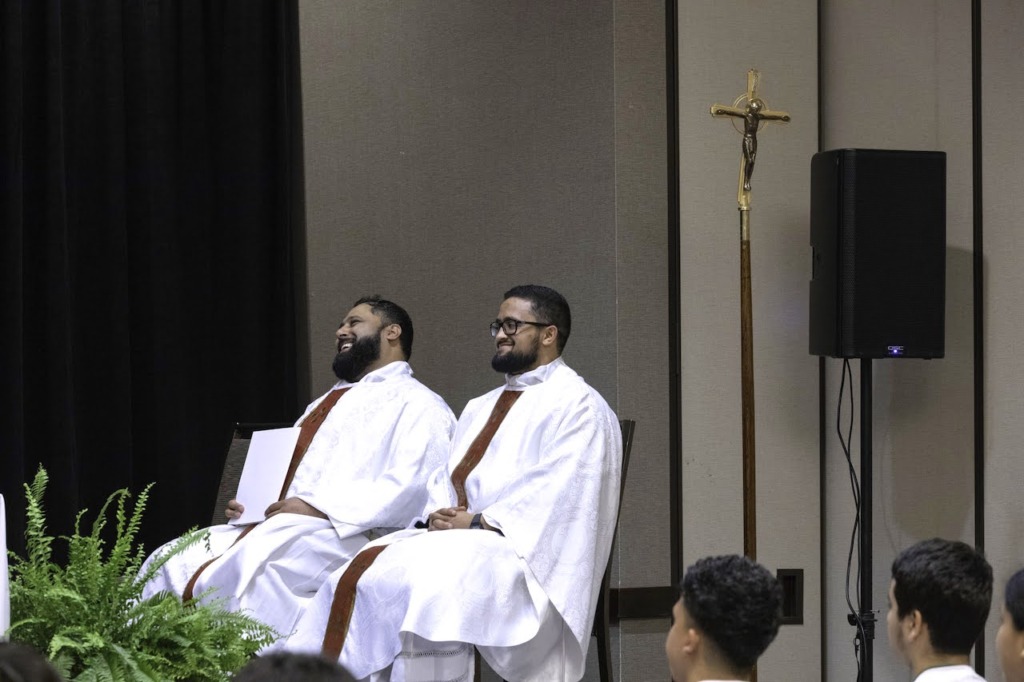
“We talked about how if Jesus has a mission for each of us uniquely, it’s important to be able to hear his voice,” he said.
“One young girl was pretty emotional and shared that she was going through a tough time. She said, ‘Jesus came to me and told me everything was going to be okay,’” Father Herrera said.
Speaking in Spanish and with the help of an interpreter, a young man from Guatemala shared an encounter of his own. Lately, he explained, he had felt lonely because he’s not from this country and he speaks only Spanish. Recently he opened his Bible to read Scripture and he said he felt the presence of God come over him.
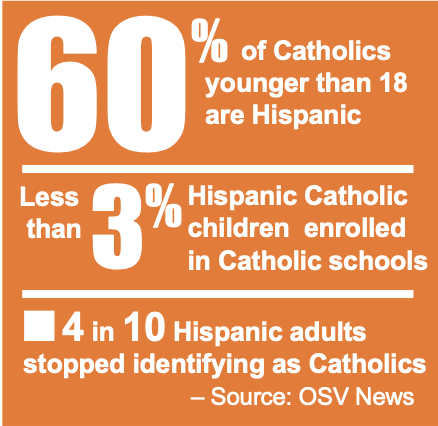 “He actually felt heat in his hands,” Father Herrera said. “It brought him great comfort and great peace.”
“He actually felt heat in his hands,” Father Herrera said. “It brought him great comfort and great peace.”
Father Herrera emphasized prayer as the path to hearing God’s voice: learning how to pray and practicing a dialogue with God.
He quoted the late Pope Benedict XVI: “Young people, if they know how to pray, can be trusted to know what to do with God’s call.”

